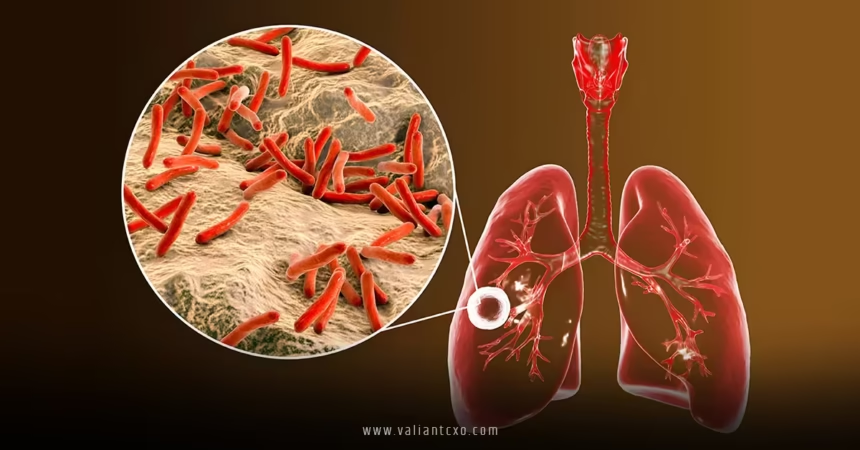Tuberculosis, often called TB, is like an uninvited guest that lingers far too long, affecting millions worldwide with its stealthy presence. This infectious disease, caused by the bacterium Mycobacterium tuberculosis, primarily attacks the lungs but can sneak into other parts of the body, causing havoc. Despite medical advancements, tuberculosis remains a formidable foe, claiming lives and challenging healthcare systems, especially in low-resource settings. So, what makes tuberculosis such a stubborn adversary, and how can we tackle it? Let’s dive into this comprehensive guide to understand tuberculosis, its impact, and the steps we can take to fight it.
What Is Tuberculosis?
Tuberculosis is an airborne bacterial infection that spreads when someone with active TB coughs, sneezes, or even talks, releasing tiny droplets into the air. Think of it like invisible confetti—except instead of celebration, it carries a serious health risk. Once inhaled, the bacteria can settle in the lungs, where they either lie dormant (latent TB) or launch an all-out attack (active TB). Not everyone who’s exposed develops symptoms, but those who do can face a tough battle if untreated.
The disease has been around for centuries, etched into history as the “white plague” for its pale, wasting victims. Today, tuberculosis is still a major global health issue, with the World Health Organization (WHO) estimating 10 million new cases in 2023 alone. It’s a reminder that even old diseases can remain modern threats.
Latent vs. Active Tuberculosis
Tuberculosis comes in two main flavors: latent and active. Latent TB is like a sleeper agent—present in the body but not causing symptoms or spreading to others. About one-quarter of the world’s population carries latent TB, often unaware. Active tuberculosis, on the other hand, is when the bacteria wake up and start causing trouble. Symptoms like persistent cough, fever, night sweats, and weight loss kick in, and the disease becomes contagious.
Why does this matter? Because latent TB can turn active if your immune system weakens, say, due to stress, malnutrition, or conditions like HIV. Understanding this difference is key to catching tuberculosis early and stopping its spread.
How Does Tuberculosis Spread?
Imagine a crowded bus where someone with active tuberculosis coughs. Those tiny bacterial droplets float through the air, and anyone nearby might inhale them. That’s how tuberculosis spreads—through close, prolonged contact in poorly ventilated spaces. It’s not as catchy as a cold, though. You’re more likely to get TB from someone you live or work with than a stranger passing by.
Risk factors amplify the odds. Living in cramped conditions, having a weakened immune system, or lacking access to healthcare can make you a prime target. That’s why tuberculosis thrives in areas with poverty, overcrowding, or limited medical resources. It’s like the disease picks on those already down.
Symptoms of Tuberculosis: What to Watch For
So, how do you know if tuberculosis has knocked on your door? Active TB comes with a laundry list of symptoms that can creep up slowly, making them easy to dismiss at first. Here’s what to look out for:
- Persistent Cough: A cough lasting three weeks or more, often with blood or phlegm.
- Fever and Chills: Low-grade fevers, especially in the evening, paired with chills.
- Night Sweats: Waking up drenched, like you ran a marathon in your sleep.
- Weight Loss: Unexplained weight loss that makes you feel like you’re fading away.
- Fatigue: Constant tiredness, as if your energy’s been sapped by an invisible force.
- Chest Pain: Pain or discomfort when breathing or coughing.
If these sound familiar, don’t wait—see a doctor. Early detection can stop tuberculosis in its tracks.
Extrapulmonary Tuberculosis: Beyond the Lungs
While tuberculosis loves the lungs, it’s not picky. In extrapulmonary TB, the bacteria attack other organs, like the kidneys, spine, or brain. This form is trickier to diagnose because symptoms vary widely. For example, TB in the spine might cause back pain, while TB in the brain could lead to seizures. It’s like a shape-shifter, adapting to wherever it lands.
Diagnosing Tuberculosis: Catching the Culprit
Diagnosing tuberculosis is like solving a detective case—you need the right clues to nab the suspect. Doctors use a mix of tests to confirm TB:
- Skin Test (Mantoux): A small injection under the skin checks for an immune response. A raised bump means TB exposure, but not necessarily active disease.
- Blood Tests: These detect TB bacteria or immune reactions with high accuracy.
- Chest X-rays: These reveal lung damage or abnormalities caused by active TB.
- Sputum Tests: Analyzing mucus coughed up from the lungs can confirm active tuberculosis.
If you test positive for latent TB, don’t panic—it’s not contagious, but you may need preventive treatment. Active TB, though, requires immediate action to protect you and others.
Treatment Options for Tuberculosis
Here’s the good news: tuberculosis is treatable. The catch? It takes time and commitment. Standard treatment involves a cocktail of antibiotics, typically taken for six to nine months. The most common drugs include isoniazid, rifampin, ethambutol, and pyrazinamide. It’s like a team of superheroes working together to knock out the bacteria.
Challenges in TB Treatment
Treatment isn’t a walk in the park. Side effects like nausea or liver issues can make it tough to stick with the regimen. Plus, missing doses or stopping early can lead to drug-resistant TB, a nastier version that’s harder to treat. Think of it like letting a weed grow back stronger after half-pulling it out.
Multidrug-resistant TB (MDR-TB) and extensively drug-resistant TB (XDR-TB) are growing concerns, especially in regions with inconsistent healthcare. These forms require longer, more intense treatments, sometimes lasting up to two years. The Centers for Disease Control and Prevention (CDC) emphasizes the importance of completing treatment to prevent resistance.
Supporting Recovery
Beyond antibiotics, recovery from tuberculosis involves good nutrition, rest, and follow-up care. Think of your body as a garden—antibiotics kill the weeds, but you need to nourish the soil to thrive. Patients with TB often benefit from support groups or counseling to stay motivated through the long treatment process.
Preventing Tuberculosis: Stopping the Spread
Prevention is the best weapon against tuberculosis. Here are practical steps to keep TB at bay:
- Vaccination: The BCG vaccine offers some protection, especially for children in high-risk areas. It’s not foolproof, but it’s a start.
- Ventilation: Good airflow in homes, schools, and workplaces reduces the risk of TB spread.
- Testing and Treatment: Regular screening for high-risk groups, like healthcare workers or those with HIV, catches TB early.
- Masks and Isolation: People with active TB should wear masks and avoid close contact until they’re no longer contagious.
Public health campaigns, like those run by the Global Fund, play a huge role in reducing TB’s spread through education and access to care.
Tuberculosis and Global Health
Tuberculosis isn’t just a personal health issue—it’s a global one. It disproportionately affects low- and middle-income countries, where poverty and weak healthcare systems fuel its spread. In 2023, WHO reported that 87% of TB cases occurred in 30 high-burden countries, with India, Indonesia, and Nigeria topping the list. It’s like TB preys on the world’s most vulnerable.
The disease also intersects with other health challenges. HIV and tuberculosis are a deadly duo, as HIV weakens the immune system, making TB more likely to turn active. Malnutrition, diabetes, and smoking also increase risk, creating a perfect storm for TB to thrive.
The Economic Impact
Tuberculosis doesn’t just harm bodies—it hits wallets, too. Families lose income when breadwinners fall ill, and healthcare costs can be crippling. In some countries, TB treatment is free, but indirect costs like travel or lost wages add up. It’s like a financial black hole, pulling entire communities down.
The Future of Tuberculosis Control
What’s next in the fight against tuberculosis? Scientists are working on better vaccines, faster diagnostics, and shorter treatment regimens. Imagine a world where TB can be cured in weeks, not months—that’s the goal. Meanwhile, global initiatives like the WHO’s End TB Strategy aim to slash TB cases by 90% by 2035. It’s ambitious, but with enough funding and political will, it’s possible.
Community involvement is also key. Grassroots efforts, like educating people about TB symptoms or reducing stigma, can make a big difference. After all, who wants to get tested if they’re afraid of being shunned?
Conclusion: Taking Control of Tuberculosis
Tuberculosis may be an old disease, but it’s far from defeated. By understanding its symptoms, seeking early diagnosis, and sticking to treatment, we can stop TB in its tracks. Prevention, education, and global cooperation are our best tools to reduce its impact. Whether you’re in a high-risk area or just want to stay informed, knowledge is power. Let’s keep talking about tuberculosis, supporting those affected, and pushing for a TB-free future. Together, we can make this ancient enemy a thing of the past.
Frequently Asked Questions (FAQs)
What is the main cause of tuberculosis?
Tuberculosis is caused by the bacterium Mycobacterium tuberculosis, which spreads through the air when someone with active TB coughs or sneezes. Close contact in crowded or poorly ventilated spaces increases the risk.
Can tuberculosis be cured completely?
Yes, tuberculosis is curable with a full course of antibiotics, typically lasting six to nine months. Sticking to the treatment plan is crucial to prevent drug-resistant strains.
Who is most at risk for tuberculosis?
People with weakened immune systems, like those with HIV, diabetes, or malnutrition, are more vulnerable. Living in crowded conditions or high-TB areas also raises the risk.
How can I protect myself from tuberculosis?
Ensure good ventilation, get tested if you’re at risk, and consider the BCG vaccine in high-risk areas. If you have active TB, wear a mask and follow treatment to avoid spreading it.
Why is tuberculosis still a problem today?
Tuberculosis persists due to poverty, limited healthcare access, and drug resistance. Global efforts are ongoing, but challenges like stigma and underfunding slow progress.
Click Here:valiantcxo.com


